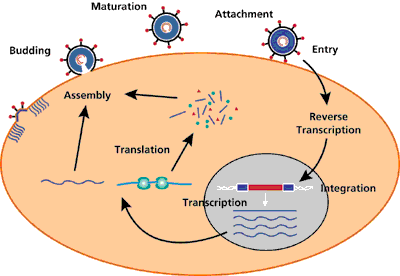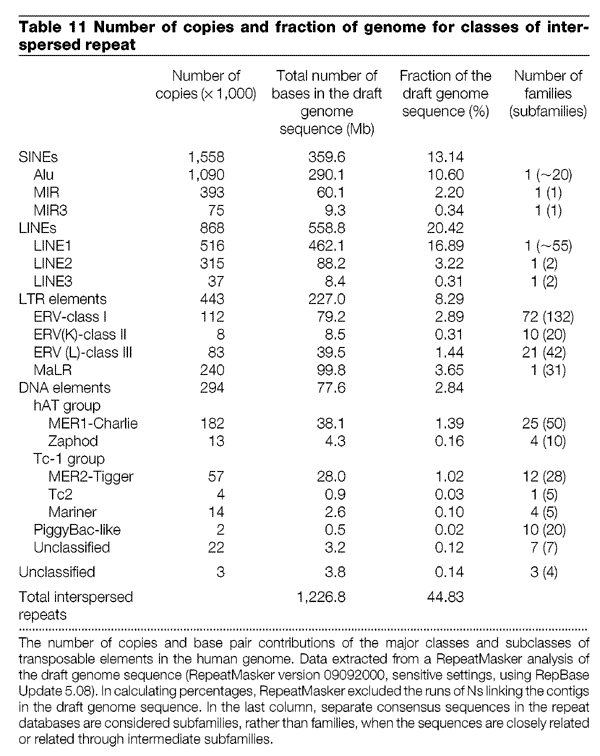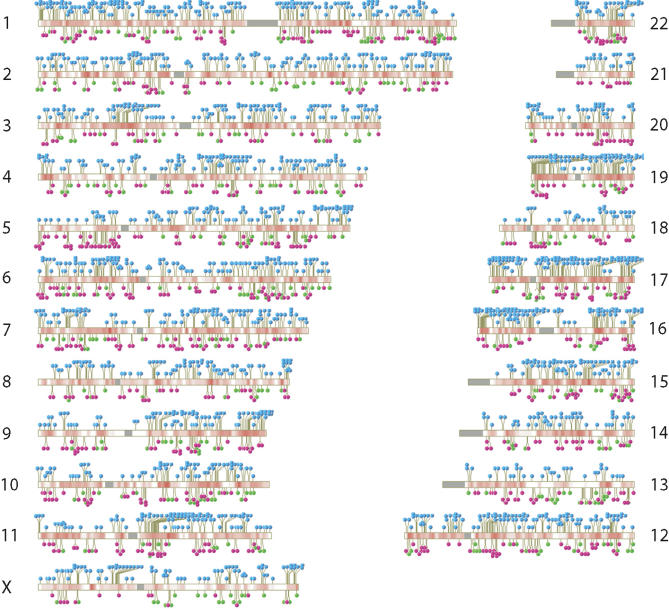The previous thread got bogged down with the usual rabbit trails, so I thought we would start fresh with this thread.
In this thread I will be presenting evidence supporting the evolution of humans from an ancestor shared with other apes. Specifically, I will be presenting endogenous retroviruses (ERV's) as genetic markers that can be used to scientifically test the hypothesis that humans share a common ancestor with apes, and that our genomes have diverged from those other species in a manner consistent with evolutionary mechanisms.
If someone wants to challenge this argument, they must present observable evidence and a testable hypothesis.
To get this thread moving, I would first like to define what an endogenous retrovirus (ERV hereafter) is. An ERV is the left over gene sequence from a retroviral infection. Why are they called retroviruses? Because they are from the 1970's? Nope. They are called retroviruses because the go from RNA to DNA using a reverse trascriptase, the reverse of how things work usually work in the cell. Once a DNA copy of the RNA viral genome is made, then the DNA linear copy is inserted into the host genome, analogous to pasting a paragraph into a book chapter. The viral DNA becomes part of that cells genome. Once in the genome, the promoters in the viral DNA lead to expression of the viral proteins, and eventually the production of viral particles at the surface of the cell. Here is a nice diagram of the retroviral cycle:

If this occurs in a germ line cell, either a sperm or egg, and the virus fails to kill that cell, then the ERV can become a permanent part of a child's genome, in every cell in their body. As it turns out, a decent chunk of our genome is made up of the remnants of retroviral insertions. The following table is from the human genome paper, and it lists just over 200,000 ERV's in the human genome across three classes.

Initial sequencing and analysis of the human genome : Article : Nature
What is also interesting about retroviruses is that they insert randomly across many, many loci. For example, the authors of the following paper allowed three different retroviruses (MLV, ASLV, and HIV) to insert into the same genome, and then they tracked where that virus inserted. The following table from that paper shows all of the human chromosomes, and the spot in each chromosome where a retrovirus inserted.

Retroviral DNA Integration: ASLV, HIV, and MLV Show Distinct Target Site Preferences
As you can see, insertions occurred along all 22 chromosomes and the X chromosome. They did find that HIV insertion had "hotpsots", but those hotspots covered nearly half of the genome.
"For HIV the frequency of integration in transcription units ranged from 75% to 80%, while the frequency for MLV was 61% and for ASLV was 57%. For comparison, about 45% of the human genome is composed of transcription units (using the Acembly gene definition)."
Retroviral DNA Integration: ASLV, HIV, and MLV Show Distinct Target Site Preferences
Beware creationists telling you that viruses insert into hotspots instead of inserting randomly. What the creationists will not tell you is that hotspots cover more than one base, and usually large chunks of the genome.
Before we go on, can we all agree that the best explanation for ERV's in the human genome is ancient retroviral insertions, and that retroviruses insert all over the genome? Does anyone have observations that challenge this conclusion?
In this thread I will be presenting evidence supporting the evolution of humans from an ancestor shared with other apes. Specifically, I will be presenting endogenous retroviruses (ERV's) as genetic markers that can be used to scientifically test the hypothesis that humans share a common ancestor with apes, and that our genomes have diverged from those other species in a manner consistent with evolutionary mechanisms.
If someone wants to challenge this argument, they must present observable evidence and a testable hypothesis.
To get this thread moving, I would first like to define what an endogenous retrovirus (ERV hereafter) is. An ERV is the left over gene sequence from a retroviral infection. Why are they called retroviruses? Because they are from the 1970's? Nope. They are called retroviruses because the go from RNA to DNA using a reverse trascriptase, the reverse of how things work usually work in the cell. Once a DNA copy of the RNA viral genome is made, then the DNA linear copy is inserted into the host genome, analogous to pasting a paragraph into a book chapter. The viral DNA becomes part of that cells genome. Once in the genome, the promoters in the viral DNA lead to expression of the viral proteins, and eventually the production of viral particles at the surface of the cell. Here is a nice diagram of the retroviral cycle:

If this occurs in a germ line cell, either a sperm or egg, and the virus fails to kill that cell, then the ERV can become a permanent part of a child's genome, in every cell in their body. As it turns out, a decent chunk of our genome is made up of the remnants of retroviral insertions. The following table is from the human genome paper, and it lists just over 200,000 ERV's in the human genome across three classes.

Initial sequencing and analysis of the human genome : Article : Nature
What is also interesting about retroviruses is that they insert randomly across many, many loci. For example, the authors of the following paper allowed three different retroviruses (MLV, ASLV, and HIV) to insert into the same genome, and then they tracked where that virus inserted. The following table from that paper shows all of the human chromosomes, and the spot in each chromosome where a retrovirus inserted.

Retroviral DNA Integration: ASLV, HIV, and MLV Show Distinct Target Site Preferences
As you can see, insertions occurred along all 22 chromosomes and the X chromosome. They did find that HIV insertion had "hotpsots", but those hotspots covered nearly half of the genome.
"For HIV the frequency of integration in transcription units ranged from 75% to 80%, while the frequency for MLV was 61% and for ASLV was 57%. For comparison, about 45% of the human genome is composed of transcription units (using the Acembly gene definition)."
Retroviral DNA Integration: ASLV, HIV, and MLV Show Distinct Target Site Preferences
Beware creationists telling you that viruses insert into hotspots instead of inserting randomly. What the creationists will not tell you is that hotspots cover more than one base, and usually large chunks of the genome.
Before we go on, can we all agree that the best explanation for ERV's in the human genome is ancient retroviral insertions, and that retroviruses insert all over the genome? Does anyone have observations that challenge this conclusion?

